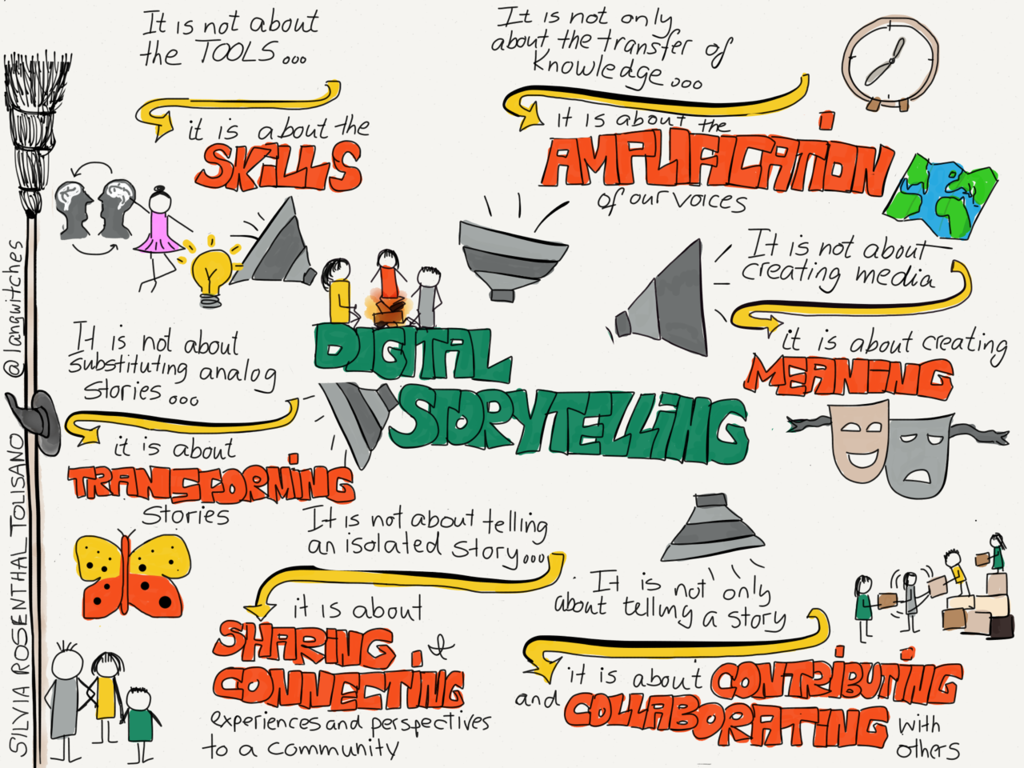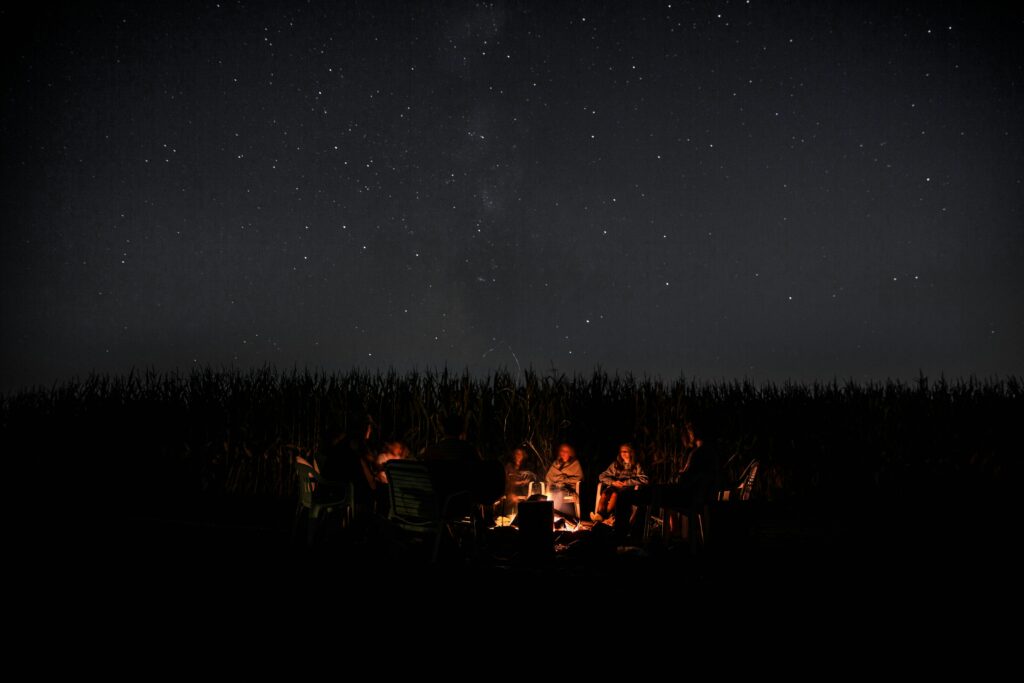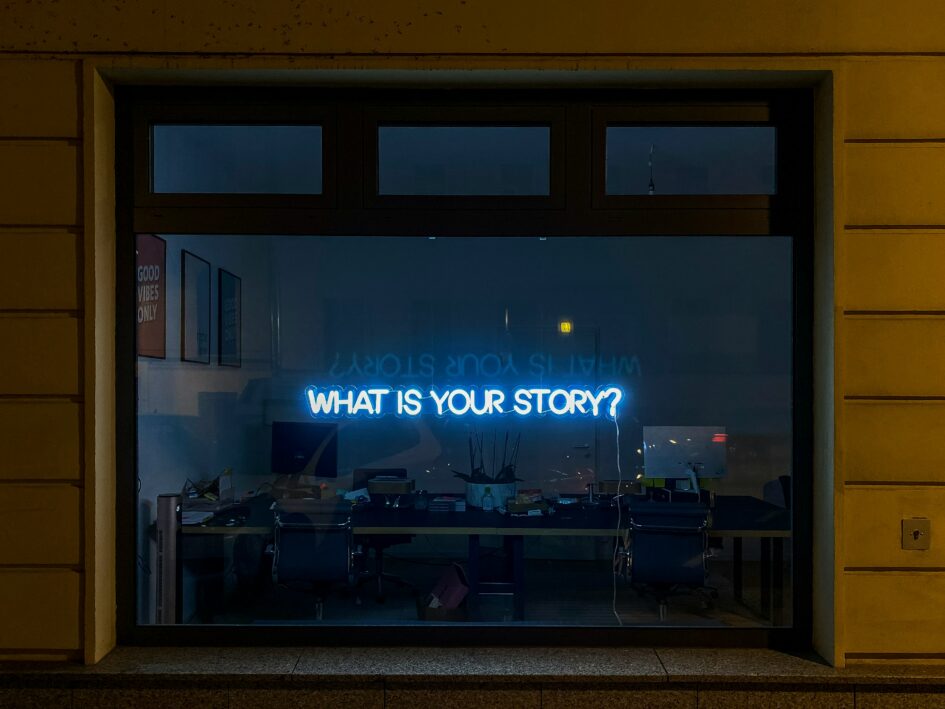The College Library Ontario defines Digital Storytelling as “at a basic level digital storytelling means using technology to tell stories. You can tell digital stories in many ways, for example: through text on a website or social media tool, through narration and images in a video, or through narration in a podcast.”
Within the classroom, digital storytelling can take many forms. Teachers can use it as part of their instruction, such as listening to podcasts on a topic, or to assign them as part of an independent study.

Silvia Rosenthal Tolisano goes further to say that digital storytelling is a method of storytelling that amplifies voices, creates meaning, contributing and collaborating, sharing and connecting, transforming stories, and developing skills.
Storytelling itself dates back to ancient civilizations when it was the means of sharing information from one generation to the next. When the print press was invented and public education became standardized, it slowly transitioned from oral storytelling to storytelling in print. In modern times, we have transitioned to digital storytelling as technology access has increased, storytelling has changed. We saw the emergence of digital storytelling in radio shows and silent films, and today we listen to podcasts and YouTube videos.

What I really love about digital storytelling is the accessibility it provides. Anyone, anywhere, can record a story in a variety of form and post it to the internet. Digital storytelling is used in marketing, for example, authors use digital storytelling to market their latest releases by recording quick 30 second videos that give the viewer a snapshot of the book. There are people around the globe who suddenly have the ability to tell their own stories and their truths. Suddenly, people have a voice when for so long certain groups and people were marginalized. Social media and digital storytelling has evened the playing field.

In the classroom, I really like to use digital storytelling with my students. Last year, my students completed two assignments where they created digital stories using two different mediums.
Science
In science, part of the grade 7 curriculum is studying fossils. As a summative assignment, the students worked in groups to create a children’s book about fossils. There was a criteria about what the book needed to include and the book needed to be written for grade 1 and 2 students. Most groups chose to use Canva to complete their assignment.
The students had so much fun creating their books. Some groups chose to create a character to narrate their stories and other groups chose to make their book more fact based. Some groups even chose to narrate their books to make them an audio picture book!
English Language Arts
Narrative stories are part of the grade 7 English Language Arts curriculum. Last year, the students initially got into podcasts after we listened to the Mars Patel podcast during a unit on short stories. It’s a fantastic mystery story that’s perfect for middle school aged students. The story intrigued many students and they would go home and listen to the episode again after telling their families about it. At the end of the series, they were asking for more podcast content. The culminating activity was writing your own podcast, this was the highlight of the year for many students!

Initially, I introduced the podcast unit using a resource I purchased on TeachersPayTeachers from ELA in Eighth. I chose to do this because I’d never written or created a podcast before and I liked that the unit was a complete unit of graphic organizers and Google slides to guide you through it (I did still need to supplement with other materials though).
The students started by writing out their drafts and once they were edited they turned their drafts into scripts. The scripts included where the ads and sound effects would be included. Some students even asked peers to narrate a character in their story. They worked so hard on this assignment and loved putting their projects together. An unexpected bonus, was to see the learning cohorts they created within the class. They became peer tutors and were great at helping each other figure something out or share their knowledge about how to use a technology.
Final thoughts
I really encourage you to incorporate digital storytelling into your classroom and lessons. Maybe you’re not quite ready to have students write their own books or podcasts. Maybe try adding a podcast station to your classroom for during silent reading or extension activities.
Here’s a curated list to get you started.
If you’re looking for podcasts in French, I highly recommend La puce à l’oreille and L’incroyable Histoire and Les odyssées.
References
Arcaya, A. (n.d.). The Learning Portal: Digital Skills: Digital Storytelling. Tlp-Lpa.ca. https://tlp-lpa.ca/digital-skills/digital-storytelling

Leave a Reply